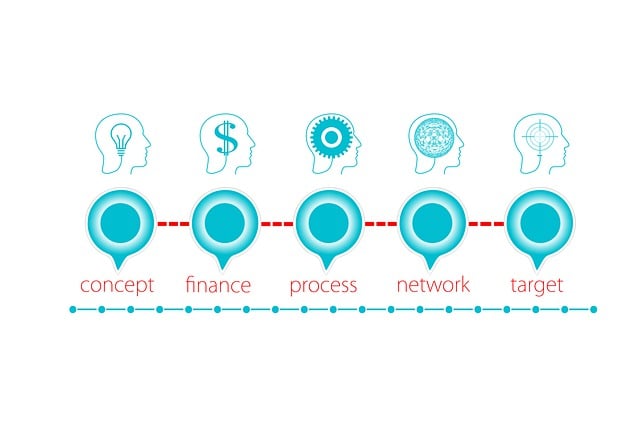Semaglutide, a GLP-1 receptor agonist, revolutionizes type 2 diabetes management with effective glycemic control and significant weight loss. Its dual action promotes satiety and improves liver glucose production. Various dosing options make it a versatile component in personalized treatment plans. Key Performance Indicators (KPIs) for evaluating effectiveness include BMI changes, weight loss milestones, HbA1c levels, and adverse event management. Clinical trials provide insights into different semaglutide strategies for optimal patient outcomes. Regular blood glucose monitoring and cardiovascular health assessment are crucial. Effective adverse effect management involves open communication and timely interventions. Patient engagement through balanced lifestyle changes enhances treatment effectiveness. Future research aims to personalize semaglutide therapy with multi-modal approaches, leveraging digital health technologies for continuous support.
“Semaglutide therapy has emerged as a powerful tool in managing type 2 diabetes, offering significant improvements in glycemic control. This article delves into the comprehensive monitoring of semaglutide’s effectiveness, a crucial aspect for healthcare professionals. We explore various KPIs and analytical methods to gauge success, from understanding the drug’s mechanisms to assessing cardiovascular benefits over time. Additionally, we discuss patient engagement strategies and future trends in semaglutide treatment plans, ensuring optimal outcomes for those benefiting from this innovative therapy.”
Understanding Semaglutide Therapy and Its Mechanisms

Semaglutide therapy has emerged as a powerful tool in managing type 2 diabetes and promoting weight loss. This novel drug belongs to a class of glucagon-like peptide-1 (GLP-1) receptor agonists, which mimic the actions of a natural hormone produced in the gut. By binding to GLP-1 receptors, semaglutide stimulates insulin secretion in a glucose-dependent manner, enhancing glycemic control. Furthermore, it suppresses glucagon release, leading to reduced liver glucose production.
The mechanisms behind semaglutide’s effectiveness extend beyond blood sugar regulation. It promotes feelings of satiety, reducing appetite and food intake, which is particularly beneficial for weight management. This dual action—improving insulin sensitivity and suppressing appetite—makes semaglutide a promising component in comprehensive diabetes treatment plans. The medication can be tailored to individual patient needs, offering various dosing options to optimize both glycemic control and weight loss outcomes.
Setting Realistic Expectations for Patients

Setting realistic expectations is a vital aspect of patient management for any therapy, including semaglutide treatment plans. Patients often seek significant and rapid results, but it’s essential to educate them about the potential timeline and milestones of this medication. Semaglutide works by mimicking the effects of a natural hormone, which can lead to prolonged adjustments in blood sugar levels over time. While some patients may experience noticeable improvements within weeks, such as reduced hunger and weight loss, achieving stable blood sugar control typically requires several months of consistent dosing.
Healthcare providers should emphasize that individual responses vary, and what works for one patient might not be the same for another. Discussing potential side effects and how to manage them is crucial, ensuring patients understand that semaglutide therapy is a partnership between them and their healthcare team, requiring patience, adherence to the plan, and regular monitoring to achieve optimal results.
Key Performance Indicators (KPIs) for Monitoring Success

When monitoring the effectiveness of semaglutide therapy, several Key Performance Indicators (KPIs) play a crucial role in evaluating the success of semaglutide treatment plans. One primary KPI is the change in body mass index (BMI) over time. A sustained decrease in BMI indicates successful weight management, a key goal for many patients undergoing this therapy. Another vital metric is the percentage of patients achieving specific weight loss milestones, such as 5% or 10% reduction from baseline weight, which can significantly impact overall health and disease management.
Furthermore, blood glucose control is essential. KPIs here might include HbA1c levels, which reflect long-term glycemic control. Significant improvements in HbA1c readings over time demonstrate the efficacy of semaglutide in managing diabetes. Additionally, tracking the occurrence and severity of adverse events related to the treatment is necessary for patient safety and can impact therapy adherence. Regular monitoring of these KPIs allows healthcare providers to adjust semaglutide treatment plans as needed, ensuring optimal outcomes for individual patients.
Utilizing Clinical Trials Data for Comparative Analysis

Clinical trials play a pivotal role in evaluating the effectiveness of semaglutide therapy, offering invaluable data for comparative analysis. By examining the outcomes of controlled studies, researchers can assess the efficacy and safety of this medication across various patient populations and treatment scenarios. These trials often involve large sample sizes, rigorous protocols, and standardized measures, enabling a comprehensive understanding of semaglutide’s impact on specific health outcomes.
Comparative analyses are particularly useful in comparing different semaglutide treatment plans, dose regimens, or combinations with other therapies. This approach allows for the identification of optimal strategies, tailored to patient characteristics, that may yield the best results. Such insights can guide clinical practice, inform patient management, and ultimately enhance the overall effectiveness of semaglutide as a therapeutic option.
Role of Regular Blood Glucose Monitoring

Regular blood glucose monitoring is a cornerstone in managing diabetes and evaluating the effectiveness of semaglutide treatment plans. By consistently measuring blood sugar levels, healthcare providers gain valuable insights into how an individual’s body responds to this medication. This data is crucial for tailoring semaglutide dosages and adjusting treatment strategies as needed.
Accurate monitoring enables early detection of any adverse effects or changes in glucose control, allowing for prompt interventions. It also facilitates the tracking of long-term trends, which can help anticipate and prevent potential complications associated with diabetes. Thus, regular blood glucose checks play a vital role in optimizing semaglutide therapy outcomes.
Assessing Cardiovascular Benefits: A Long-Term Perspective

The monitoring of semaglutide therapy extends beyond blood sugar control, encompassing a comprehensive assessment of cardiovascular health. Long-term studies are crucial in understanding the enduring benefits of semaglutide treatment plans. These studies allow researchers to track the reduction of major adverse cardiovascular events (MACEs), such as heart attacks and strokes, which is a significant focus in diabetes management. By observing patients over extended periods, healthcare professionals can gain valuable insights into the drug’s long-term efficacy and safety.
This perspective is essential for tailoring semaglutide treatment to individual patient needs. The cardiovascular benefits observed in the long term can guide clinical decisions, ensuring that semaglutide remains an effective and safe option for managing diabetes and associated cardiac risks.
Identifying and Managing Adverse Effects

Identifying and managing adverse effects is a crucial component of any successful semaglutide treatment plan. Semaglutide, while highly effective in managing conditions like type 2 diabetes and obesity, can cause various side effects ranging from mild to severe. Common symptoms include gastrointestinal issues such as nausea, vomiting, and diarrhea, which often improve over time with continued treatment or adjustments to the dosage. Healthcare providers play a vital role in monitoring patients for these effects and providing timely interventions.
Effective management involves open communication between patients and healthcare teams, regular follow-ups, and prompt addressing of any concerning symptoms. Adjustments to semaglutide treatment plans may include modifying the dosage, switching to an alternative medication, or exploring additional strategies to mitigate adverse effects. Such proactive measures ensure patients receive the full benefits of semaglutide therapy while minimizing potential drawbacks.
Patient Engagement and Lifestyle Modifications

Patient engagement is a key component of successful semaglutide therapy, as it requires active participation and commitment from individuals to achieve optimal results. This involves regular communication with healthcare providers, adhering to prescribed medication regimens, and incorporating lifestyle modifications into their daily routines. By actively participating in their treatment plans, patients can better manage their conditions and experience improved health outcomes.
Lifestyle changes, such as following a balanced diet, engaging in regular physical activity, and maintaining a healthy weight, play a significant role in the overall effectiveness of semaglutide treatment. These modifications help individuals achieve and sustain glucose control, reduce cardiovascular risk factors, and enhance their overall well-being. Patient education and support are essential to facilitate these changes, ensuring individuals have the knowledge and resources needed to make informed decisions about their health.
Future Trends in Semaglutide Treatment Plans

The future of semaglutide therapy looks promising, with ongoing research and clinical trials exploring its potential across various healthcare scenarios. As we gain more insights into this drug’s mechanism, personalized treatment plans are likely to emerge, tailored to individual patient needs. This precision medicine approach could involve combining semaglutide with other therapeutic options, creating multi-modal strategies for managing chronic conditions like type 2 diabetes and obesity.
Additionally, digital health technologies may play a significant role in enhancing the effectiveness of semaglutide treatment plans. Telemedicine consultations, mobile apps for monitoring glucose levels and medication adherence, and AI-driven predictive analytics could enable continuous patient support and early intervention, further optimizing treatment outcomes.
